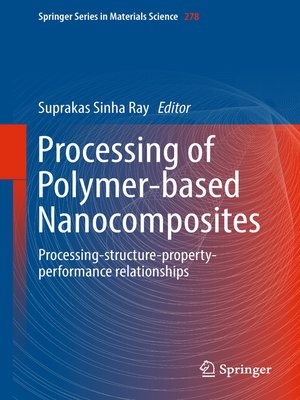Processing of Polymer-based Nanocomposites
ebook ∣ Processing-structure-property-performance relationships · Springer Series in Materials Science
By Suprakas Sinha Ray

Sign up to save your library
With an OverDrive account, you can save your favorite libraries for at-a-glance information about availability. Find out more about OverDrive accounts.
Find this title in Libby, the library reading app by OverDrive.



Search for a digital library with this title
Title found at these libraries:
| Library Name | Distance |
|---|---|
| Loading... |
Processing of polymer nanocomposites usually requires special attention since the resultant structure—micro- and nano-level, is directly influenced by among other factors, polymer/nano-additive chemistry and the processing strategy. This book consolidates knowledge, from fundamental to product development, on polymer nanocomposites processing with special emphasis on the processing-structure-property-performance relationships in a wide range of polymer nanocomposites. Furthermore, this book focuses on emerging processing technologies such as electrospinning, which has very exciting applications ranging from medical to filtration. Additionally, the important role played by the nanoparticles in polymer blends structures has been illustrated in the current book, with special focus on fundamental aspects and properties of nanoparticles migration and interface crossing in immiscible polymer blend nanocomposites.
This book focuses heavily on the processing technologies and strategies and extensively addresses the processing-structure-property-performance relationships in a wide range of polymer nanocomposites, such as commodity polymers (chapter 1), engineering polymers (chapter 2), elastomers (chapter 3), thermosets (chapter 4), biopolymers (chapter 5), polymer blends (chapter 6), and electrospun polymer (chapter 7). The important role played by nanoparticles in polymer blends structures in particular is illustrated.
The book is useful to undergraduate and postgraduate students (polymer engineering, materials science & engineering, chemical & process engineering), as well as research & development personnel, engineers, and material scientists.







